Last Updated on June 3, 2024 by Annie Baldwin
Choosing eco-friendly flooring for your home is an excellent way to reduce your environmental impact.
With so many options available, it can be tricky to know which flooring types are truly sustainable.
This article highlights some of the best environmentally friendly flooring solutions.
What Is the Most Eco-Friendly Flooring?
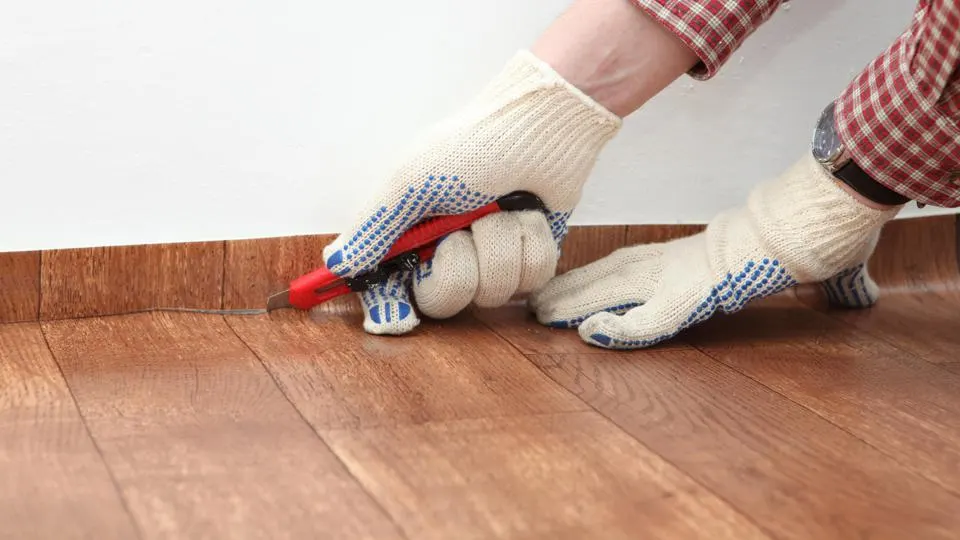
Linoleum is one of the most eco-friendly flooring options as it is made from natural materials like linseed oil, cork dust, wood flour, limestone, and jute.
It is biodegradable, durable, and moisture-resistant.
Linoleum has a long lifespan and very low environmental impact compared to vinyl, laminate, and carpet flooring.
Key Points
- Linoleum, cork, bamboo, and engineered hardwood are eco-friendly flooring options.
- They are made from renewable, sustainable sources like cork and bamboo.
- Linoleum has the lowest environmental impact and is the healthiest option for homes.
Our Opinion
What Is the most environmentally friendly flooring?
In my opinion as a flooring expert, linoleum is the most environmentally friendly flooring available today.
It’s made from natural materials, biodegradable, durable, and moisture resistant.
Linoleum has very low emissions, doesn’t require a lot of energy to produce, and has an extremely long lifespan.
For sustainable and healthy home flooring, linoleum is the best choice.
Bamboo Flooring
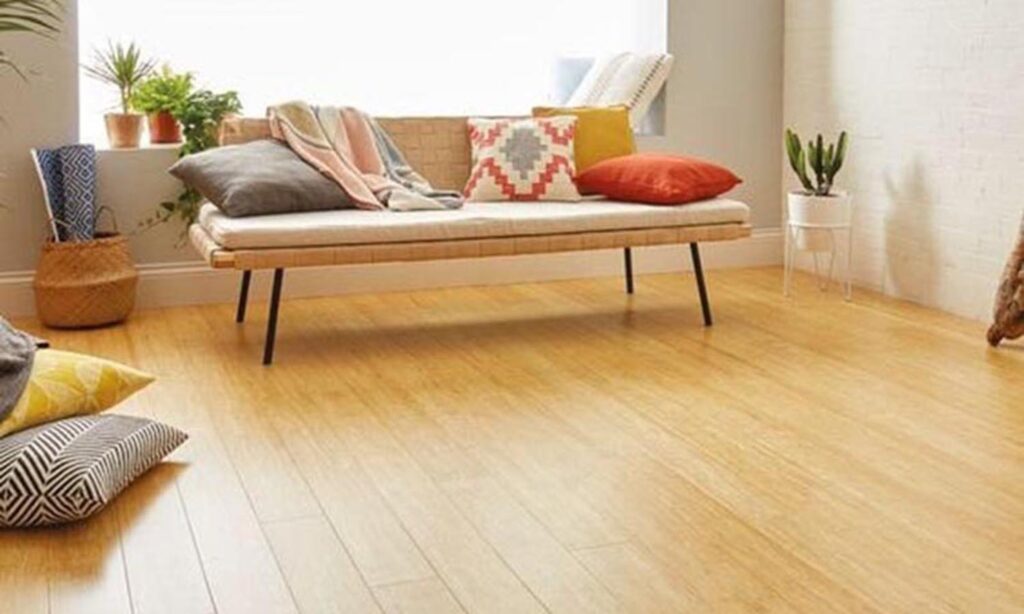
Bamboo has emerged as one of the most popular eco-friendly flooring choices. It’s a natural grass that grows rapidly without the need for fertilizers or pesticides. Bamboo is also extremely durable and scratch-resistant.
Here are some key benefits of bamboo flooring:
- Bamboo is 13% harder than maple and 27% harder than northern red oak, making it very resilient.
- It’s constructed from a quickly renewable resource that takes only 3-5 years to mature, unlike hardwoods which can take decades.
- Bamboo can be easily replanted after harvesting, so it’s a sustainable flooring material.
- Most bamboo flooring products today are made with low-VOC adhesives and finishes to minimize indoor air pollution.
With proper sealing and maintenance, high-quality bamboo floors can last upwards of 50 years. Just make sure to choose products with low VOC finishes. Overall, bamboo is one of the best eco-friendly flooring options due to its unmatched durability and sustainability.
Cork Flooring
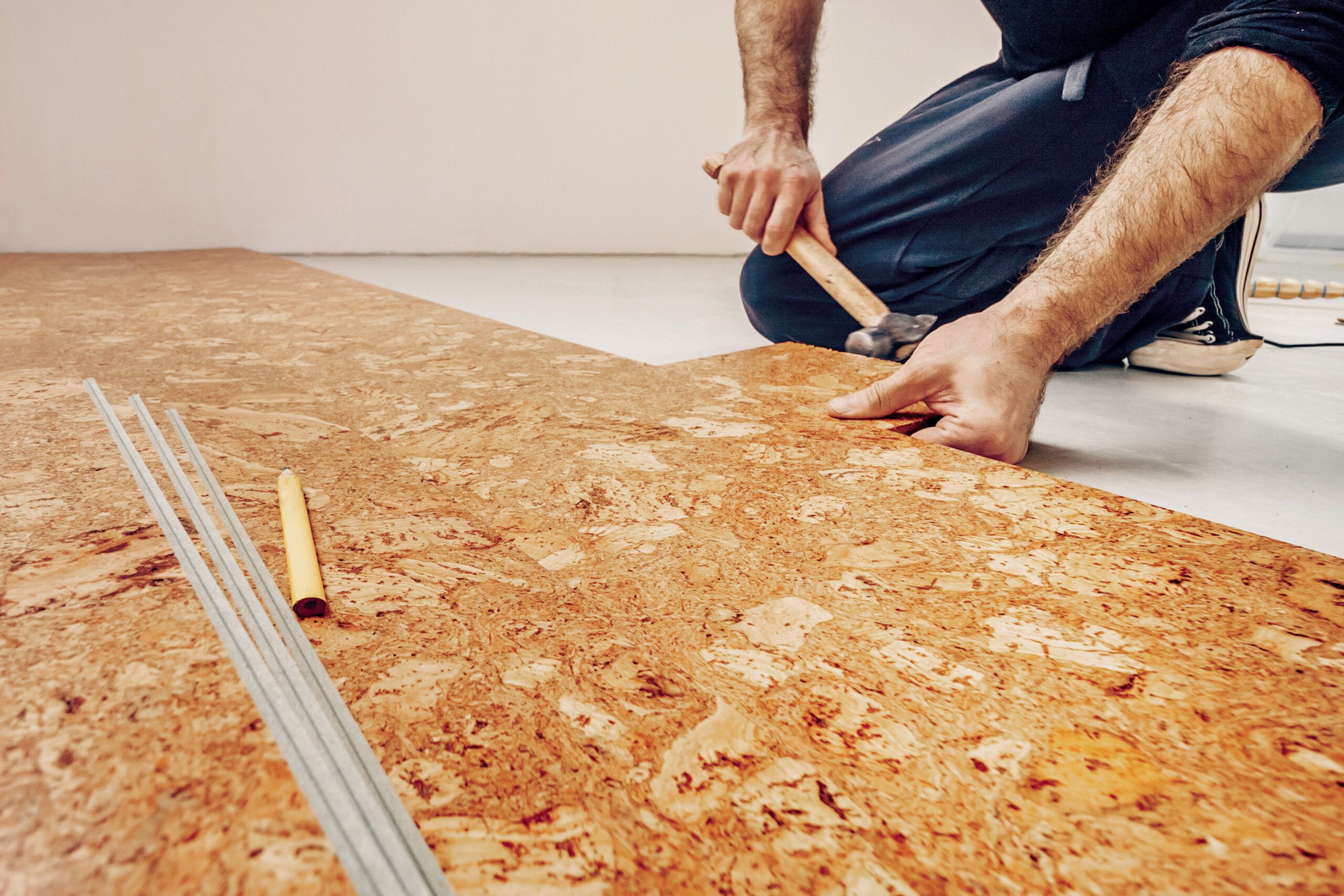
Another excellent sustainable flooring choice is cork. Cork comes from the bark of cork oak trees and is harvested without harming the trees themselves. The bark regrows every 9 years allowing for renewable harvesting.
Cork has many positive environmental attributes:
- It is easily renewable and recyclable at the end of its life.
- Cork oak forests absorb CO2 and help prevent desertification and wildfires.
- Cork floors don’t require finishing chemicals and are naturally antimicrobial and hypoallergenic.
- Cork is durable, sound-absorbing, and comfortable underfoot.
High-quality cork tiles and planks can last 20-30 years with proper care. While not as hard as wood or bamboo, cork is an excellent eco-friendly alternative, especially for bedrooms and family rooms where a softer floor is desirable. The sustainable nature and comforting feel of cork make it a top choice for green homes.
Linoleum Flooring
Linoleum is another environmentally friendly flooring option to consider. Made from renewable natural materials like linseed oil, cork dust, wood flour, limestone, and jute, linoleum is biodegradable and does not release harmful VOCs.
Here are some of the eco-benefits of linoleum flooring:
- It is made from rapidly renewable materials like linseed oil and cork.
- Linoleum does not require varnishes or coatings, avoiding VOC off-gassing.
- It is naturally antimicrobial and hypoallergenic.
- Linoleum is durable, lasting up to 40 years with proper care.
- Old linoleum floors can be recycled back into new linoleum.
With a wide range of colours and patterns available, linoleum is a versatile green flooring option. It works well in kitchens, bathrooms, hallways, and other high-traffic areas. For homeowners seeking an answer to the question ‘What is the most environmentally friendly flooring?’ the answer might be linoleum. For an environmentally responsible and healthy floor, linoleum is an excellent choice.
Recycled Hardwood Floors
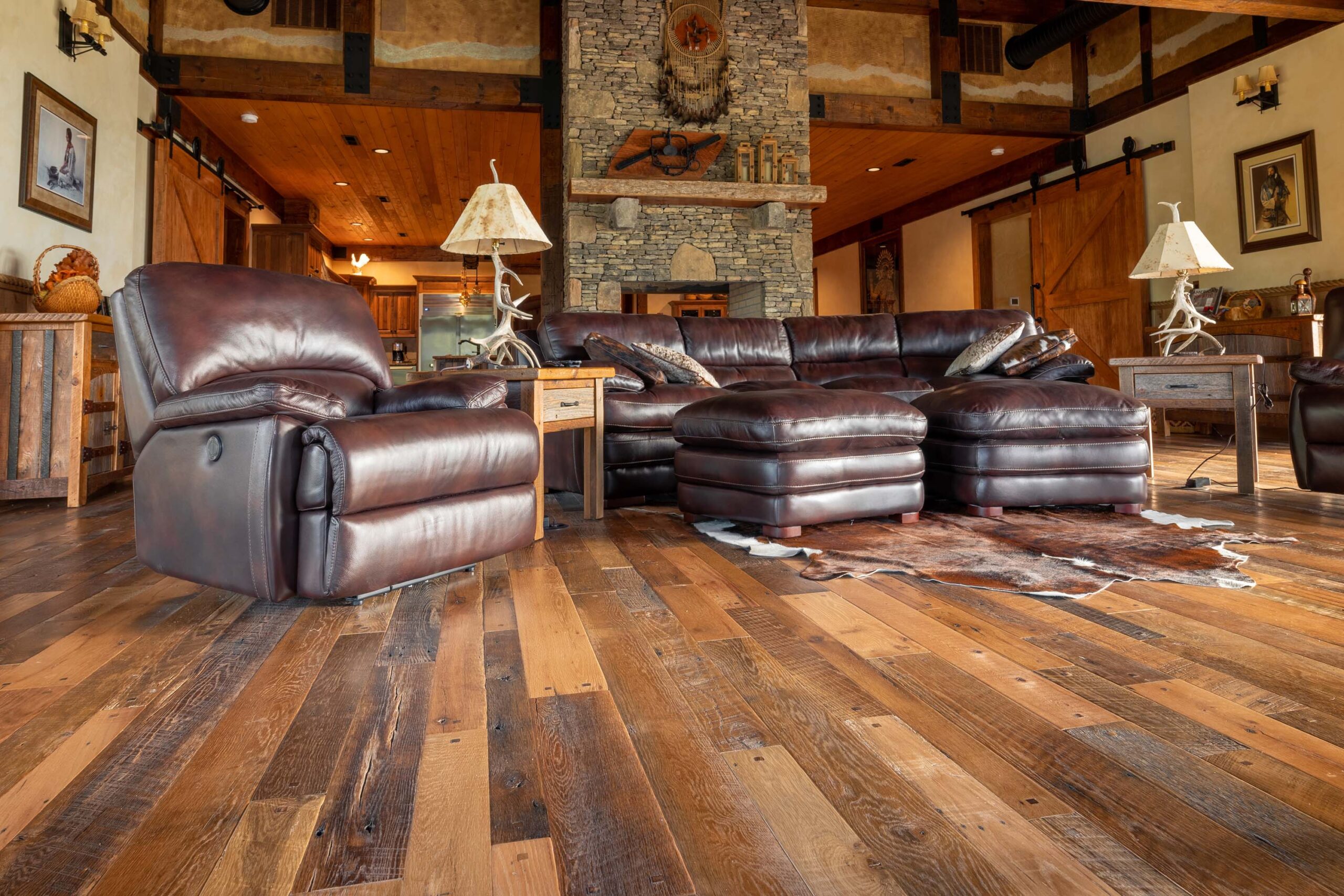
For those who love the look and feel of hardwood floors but want a more eco-friendly option, recycled hardwood is a great choice. These floors are made from reclaimed lumber from old barns, factories, and other sources.
Here are some of the sustainability benefits of recycled hardwood flooring:
- It makes use of lumber that would otherwise end up in landfills.
- No new trees are cut down to manufacture the floors.
- Each floor has a unique look and story from its previous life.
- Reclaimed wood is often of higher quality with tighter grain patterns.
- It can be sanded and refinished many times, increasing lifespan.
Recycled hardwood comes in many species like oak, maple, hickory, and walnut. The patina and imperfections add rustic charm. With proper installation and maintenance, a recycled hardwood floor can last for decades. For eco-conscious homeowners who want the natural beauty of wood floors, recycled hardwood is an excellent sustainable choice. Another wood-like flooring option is composite decking; which is made of recycled plastics and wood.
Natural Stone Flooring
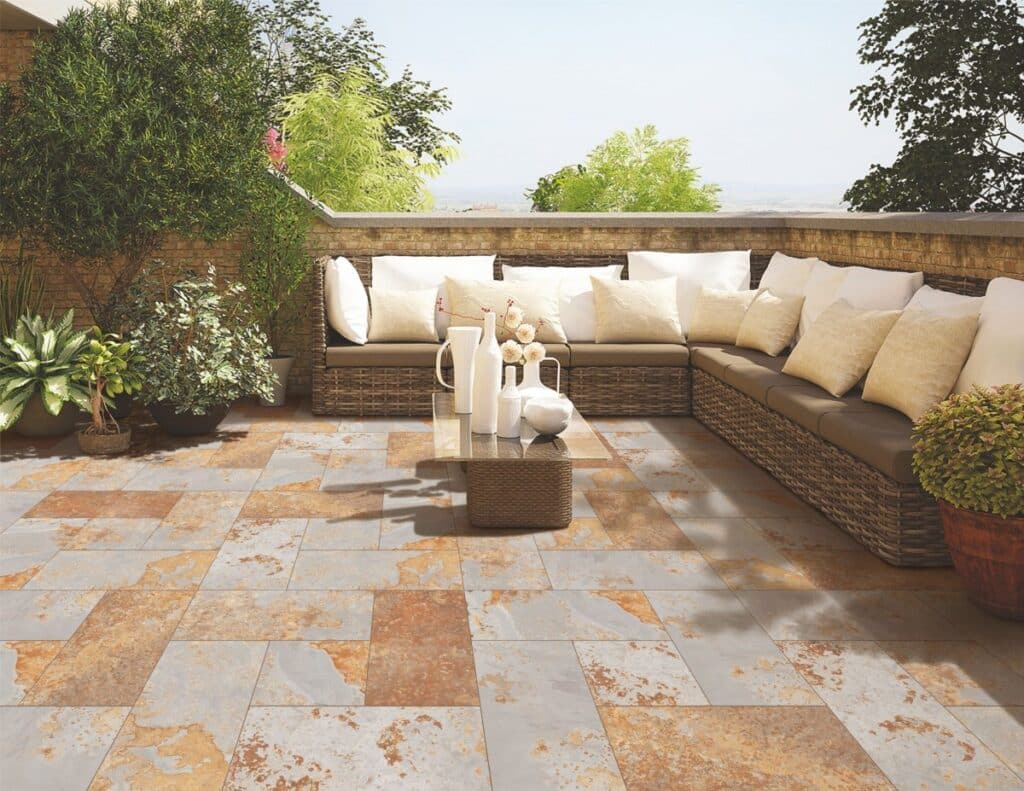
For a timeless, durable flooring option, natural stone has much to offer environmentally-conscious homeowners. Stone like slate, travertine, limestone, and granite are among the most eco-friendly choices.
Consider these sustainable benefits:
- Stone is an abundant natural material that requires little processing.
- It’s extremely durable, lasting 100+ years with proper care.
- Stone has excellent thermal mass, absorbing and retaining heat.
- Quarrying stone is generally less invasive than logging forests, especially if the quarry company is environmentally friendly.
- Stone does not require synthetic finishes or toxic adhesives.
Stone floors bring natural beauty and elegance to any room. Variations in color and veining add unique character. Stone is also naturally slip-resistant. While stone can be pricier upfront, the long lifespan offsets costs over time. For those seeking a sustainable, classic look, natural stone floors are a wonderful green choice.
FAQ
What Is the Most Environmentally Friendly Flooring Material?
Bamboo, cork, linoleum, and engineered hardwood are some of the most eco-friendly flooring options because they are made from renewable and sustainable sources. Bamboo is a particularly sustainable choice as it is very durable and long-lasting.
What Flooring Has the Lowest Environmental Impact?
Cork and linoleum flooring have a low environmental impact as they are made from natural and readily renewable materials. They are biodegradable and do not require a lot of energy to produce.
What Kind of Flooring Is Environmentally Friendly?
Bamboo, cork, linoleum, and engineered hardwood are considered environmentally friendly flooring options because they are made from sustainable sources and can be recycled or composted at the end of their lifecycle.
Which Is the Healthiest Flooring for Homes?
Linoleum and engineered hardwood are two healthy flooring options for homes. Linoleum is made from natural materials like linseed oil and cork dust, while engineered hardwood has a real wood veneer over a sustainable substrate. Both are durable, non-toxic, and moisture-resistant.
Conclusion
Bamboo, cork, linoleum, and engineered hardwood are some of the most eco-friendly flooring options available today. They are made from renewable, sustainable sources and have a lower environmental impact compared to materials like vinyl and laminate. Linoleum in particular stands out as a durable, non-toxic, and moisture-resistant flooring that is healthiest for homes. When choosing sustainable flooring, linoleum, cork, bamboo, and engineered hardwood are all great options that protect the environment.
